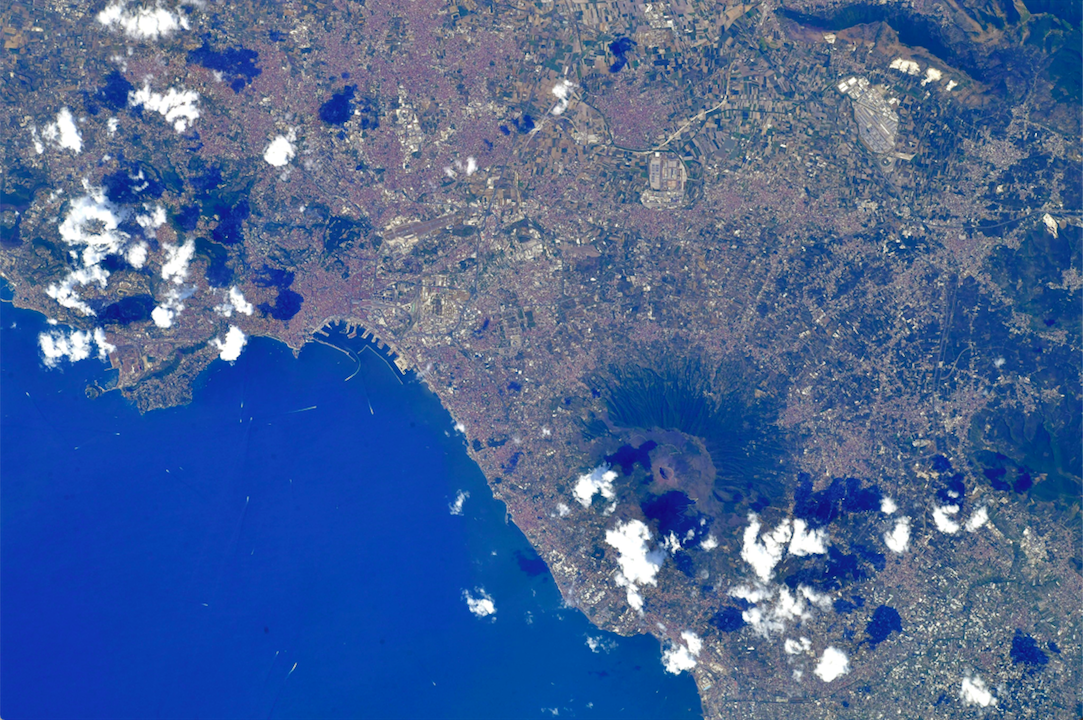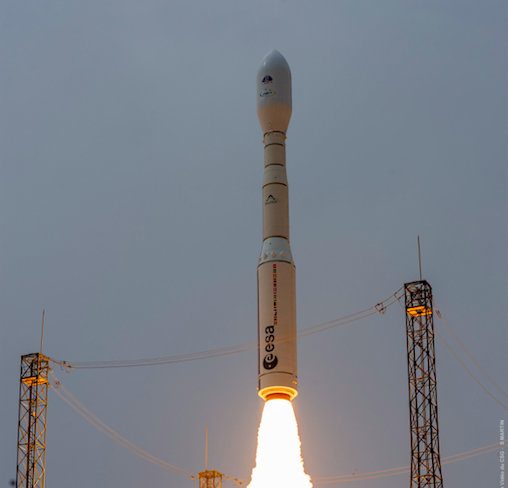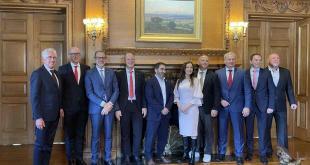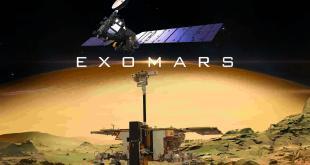By Andrea D’Ottavio

The space sector has completely changed in the past few years. France is now the driving force behind the European space sector (albeit more for its purposes rather than for shared European goals), and Germany, apparently distracted by national rearmament, is still determined to defend its ambitions, so as not to completely leave the ground to Paris. In the face of all this, what is Italy’s position? Further apart, it appears.
Who will win the EO throne?
Rome seems to have chosen the place it wants to occupy in the European space frame. The one undisputed leader in the field of Earth Observation (EO). A field of absolute strategic value, not only from a scientific point of view but also from the point of view of Defense and Security. The ability to observe and characterize any object on the Earth’s surface regardless of where it is located is an absolutely valuable strategic advantage. Such domain historically falls within the technological abilities of the country, as the recent appointment of the Italian Simonetta Cheli as director of ESA’s Center of Excellence for Earth Observation (ESRIN), based in Frascati (Rome), confirmed. An appointment that somehow soothed – if not fully cured – the sting that the failure to appoint an Italian to the chair of ESA Director General, after years of French-German control, had left behind.
Italy, therefore, wants to get serious. It wants to take the role of the European leader in the field of EO systems and services. A role that, although not recognized by either Paris or Berlin, it already possesses de facto, due to being at the forefront of the sector worldwide thanks to its national COSMO-SkyMed constellation, and its participation in the realization of almost 50% of six COPERNICUS’s Sentinel satellites. Italy, however, contends the EO supremacy with France. If on the one hand Paris has, over time, assumed the European leadership in optical satellite systems for EO, Italy has built its success and undisputed leadership around the -complementary- Earth observation radar (SAR) systems. The (big) difference between the two is that SAR systems can work in all weather conditions, unlike optical systems. In 2019, Italy challenged France’s supremacy in the EO sector when it launched the internal Italian mission, PRISMA. PRISMA is an optically-equipped satellite meant to extend Rome’s capabilities and ambitions in a territory which is firmly occupied by France.
Italian investments
How Italy intends to carve out this role opens up a series of reflections and perplexities. According to reports from the Minister of Technological and Digital Innovation (MITD), a total budget of 4.5 billion euro is reserved for both financing Italy’s contribution to the new ESA overall budget at the next Ministerial Council, and the development of its national space sector over the period 2021-2026. If we take Paris as a reference, it is possible to see that the Italian budget for space is less than one-third of the budget of the Elysée. On September 19th, 2022, French Prime Minister Élisabeth Borne announced the allocation of an additional 9 billion euro for the next three years to the already 1.5 billion euro allocated by the “France 2030” fund for the growth of the French national space sector (ca. 3 billion per year, vs. 0.45 of Italy). A strong discrepancy that seems difficult to compete against.
Currently, in Italy there are three main funding sources: 1) the Next Generation EU– an EU-based fund in Italy known as the National Recovery and Resilience Plan (PNRR), 2) the Complementary Fund, a national investment fund of more than 31 billion euro established to support strategic activities included in the PNRR, and 3) other private national funds. As previously introduced, the 4.5 billion euro allocated by the Italian government will be used to cover both the Italian participation in ESA’s overall budget and the planned investments in the national space sector. For the latter, the allocated budget is indicated to be 2.3 billion euro, or 50% of the total budget. Of the 2.3 billion euro dedicated to the national space sector, 1.5 billion will come directly from the PNRR, to which Italy will add 800 million euro from its Complementary Fund.
Italy is a valuable reservoir of highly technical, scientific, and industrial skills left at the service of the strategic objectives of other countries
The national space budget of 2.3 billion euro will then be used to pursue four investment sectors, namely, Satellite Communications (SatCom), Earth Observation (EO), Space Transportation and Space Factory, and In-Orbit Servicing. For the Satcom sector, Italy will allocate 320 million euros, ca. one-seventh of the budget. These funds will go to support the French proposal to build the first European communication satellite constellation of about 600 satellites in LEO, officially known as GOVSATCOM. Thus, this money will go indirectly to contribute to the ESA budget rather than internal projects.
Half of the total budget that Italy will devote to its national space sector will go to the second investment sector, EO. Italy will allocate 1.07 billion euro to project IRIDE, another satellite constellation devoted to EO purposes and based on the implementation of optical systems rather than radars, competing then head-to-head with France.

The Italian Strategy
A space power sees its highest form of expression in its national space agency. For Italy, this is a painful aspect to discuss, and a symptom of a country living in total asynchrony with reality. In the past few years the Italian government – here in the form of Minister Vittorio Colao, the authority delegated by the Prime Minister’s Office for space affairs – took a series of questionable decisions. The latest, and most questionable, is a recent agreement discussed by Minister Colao and ESA in Lisbon on the 19th of November 2021, during the ESA Intermediate Council meeting at the Ministerial level. The agreement stated that Italy would use ESA’s technical and administrative support for the development of the project IRIDE: the core of its national space program, mainly supported through the PNRR funds. The so-called “Technical Assistance Agreement” was officially signed in Rome on the 17th of June 2022. Through this agreement, Italy entrusts ESA with a budget of 1.3 billion euro, the combination of the previous forecast of 1.070 billion euro from PNRR plus an additional 230 million euro covered by PNRR or national funds. Furthermore, included in the 1.3 billion euro, there is also the ESA “commission” fee, ca. 6% of the total, or about 78 million euro. With this agreement, Italy not only hands over more than half of its funds to ESA, but also provides ESA with the keys to its flagship project, the IRIDE constellation. Furthermore, because the Technical Assistance Agreement sees ESA as the “prime contractor” directly founded by the Italian Government for the strategic and technical development of the IRIDE constellation, this may imply that, in the end, ESA might become the owner of the constellation and its main operator (or at least a partial operator through a currently unknown sharing utilization policy). Whatever the case, ESA will certainly have a non-negligible role in the utilization of future Italian EO satellite constellations.
The Italian national interests have not been defended, and they have not been defended because they have never been well identified or structured
As a result of this operation, Italy is giving ESA 1.3 billion euro (a budget that was given to the country by the EU for its national development), and, at the same time, it is delivering a 100% Italian project into the hands of a third party which interests do not necessarily align with its own. A questionable choice to say the least, and an admission of the Italian inability to manage not only the political but even technical aspects of such a project. Additionally, this is the first case in the history of the European Space industry in which a country requests consultation from an entity for which it is not only an active third-party contributor but also a direct founder. Thus, further paying the entity itself to secure services for which it has already paid for. Needless to say, the power strategies showed by Paris and Berlin go in the opposite direction: they both have consistently and strategically used their funds to supply their respective national space sectors and not the other way around.

Italy and the CM-22
The next key appointment for European space is on November 22nd and 23rd in Paris – the “den of the wolf” – where the Ministerial Council of ESA member countries (Council meeting at Ministerial level, CM22) will take place. How Italy will present itself is all to be seen. Arguably, it is difficult to cause more damage. What is certain is that those who will represent Italy will have less than a month’s knowledge of the Italian space sector necessities, because of the recent election.
Independently from the elections and the natural ministry turnover that follows, the central issue is that the Italian national interests have not been defended, and they have not been defended because they have never been well identified or structured. Italy should have a national space strategy and a series of laws regulating its activities on the national territory. These two aspects, which currently do not exist in the country, would be a good start in preparing Italy to become a space power. They are both very well developed in Paris and Berlin, but they presuppose the existence of a Space identity that Italy is still looking for. Without a strategy on Earth, it is hard to imagine how one can develop a strategy in Space.
The latest Space Report published by the Space Foundation certifies that the total business volume of the space economy for the year 2020 was $447 billion globally. In the report, at the level of investment relative to its GDP, Italy emerges as the world’s sixth space power. The term “power” improperly suggests that Rome possesses autonomous operational and decision-making capabilities in the space domain. However, the facts at the moment indicate the opposite. Italy is a valuable reservoir of highly technical, scientific, and industrial skills left at the service of the strategic objectives of other countries, in particular, France. Rather than “space power”,which in any case Italy is not, it would be more appropriate to speak of “powerful provider of space assets”: from pressurized modules to launchers (VEGA), to small satellites, just like those planned for the IRIDE constellation, Italy has one of the few existing industrial supply chains worldwide that can cover almost all space services.
At the Ministerial, each ESA member state brings its dossiers describing programmatic and financial proposals on which political convergences must be found. Such convergences are subordinated to political alliances. With Paris holding the European Union Presidency, the Ministerial at the end of November is a formality. They will probably simply ratify the programs already discussed in the three previous appointments wanted by Paris: the Space Summit on February 16, 2022, in Toulouse (France), the 306th ESA Council in Paris in March 2022, and the 13th ESA Council on April 13, 2022, also in Paris. Italy will have a projected availability to the ESA budget of about 2.2-2.5 billion euro. A figure that, in the last Ministerial held in Seville in 2019, saw the Mediterranean country positioned as the third overall contributor, not far behind France at the time.
The European space sector is experiencing the worst identity crisis in its long history, further aggravated by the total breakdown of relations with Russian ROSCOSMOS after the beginning of the Ukraine invasion last February. Like it or not, Europe has always been heavily dependent on Russia for space, and the disruption resulting from the Russian invasion of Ukraine has dramatically -and dangerously- reduced European capabilities of space access. It is for these reasons that at CM-22, ESA Director General Joseph Aschbacher will call for a further increase in the Agency’s overall funding budget (possibly over 18 billion euro) for the next three years. We will see whether or not Italy will be able to keep itself on the podium of the three most important contributors, and most importantly, which paths the complicated family of ESA will pursue to overcome not only the challenges of tomorrow but also those of today.
This article was first published on Geopolitica.Info, a Study and Research Center based in Italy and focused on geopolitics and international relations. Click here for the full version (in Italian).
Disclaimer: The views expressed in this article are those of the author alone. The author or its company´s affiliates are not commercially or financially related of any sort to the companies or institutions mentioned above.

Andrea D’Ottavio is the coordinator of the Space section of Geopolitica.Info and a Space Operations and Mission engineer at Thales Alenia Space Italia. Andrea owns a Master’s degree in Aeronautical and Astronautical Engineering from the Polytechnic University of Turin with a specialization in aerospace systems, particularly in the military field. Before moving to Thales Alenia Space he was Mission Engineer at ALTEC SpA in Turin, Italy, where he worked at the Rover Operation Control Center (ROCC), the control center for ESA’s ExoMars mission.





